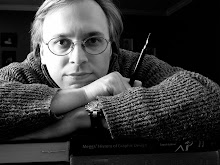
Originally published almost forty years ago, this work has certainly lost none of its relevance for those seeking an understanding of the forces behind the downward trajectory of both western art and western culture over the course of the last three centuries or so. This assertion in itself might seem a rather odd one to most folks—didn’t the problems (for both art and culture) really start during the 20th century? Actually, no.
Rookmaaker argues quite persuasively that the seeds of nihilism and despair were actually sown during the “Enlightenment” period of the 18th century and the obvious problems which began to manifest themselves in the 20th century were the resultant harvest. The intervening 19th century may be viewed as a period during which these matters were working themselves out and during which much art that might be deemed “beautiful” was still being produced, but the problems were there nonetheless, and with increasing clarity, as a mere scratch to the surface reveals.
Beginning in medias res, with the medieval period (it isn’t really necessary to go back further in time to prove his point), Rookmaaker demonstrates that there was a time when physical and spiritual realities coexisted comfortably and formed a seamless whole, both in the thoughts and lives of people and on the painted canvas. This view persisted, remarkably in some respects, even through the Renaissance and Reformation periods.
It was the Enlightenment, with its dogged insistence upon rationality and empiricism as the only standards for gauging “reality”, which drove the seemingly irrevocable wedge between the natural and the supernatural. Artists (and everyone else, for that matter) since that time have come under increasing pressure to choose between the two. The predominant approach has been to reject the latter in favor of the former, resulting in a growing crescendo of meaninglessness and despondency. Certain movements (Romanticism and certain enclaves of Christian art) have sought the opposite approach of asserting the supernatural over the natural, but with limited success, largely because at heart they have continued to accept the fundamental dualism of the Enlightenment view.
My only reason for not rating the book more highly is that, although Rookmaaker’s insights are keen, I find his style a bit exacting, and the increasingly depressing nature of the material begins to weigh down on you after a while. (I actually started this book a good while back and had to take an extended break about two-thirds of the way through before finishing.) There’s great stuff toward the end though, so don’t fail to persevere if you encounter the same difficulties!
Sunday, July 5, 2009
Modern Art and the Death of a Culture
Topic:
Book Reviews
Subscribe to:
Post Comments (Atom)





No comments:
Post a Comment